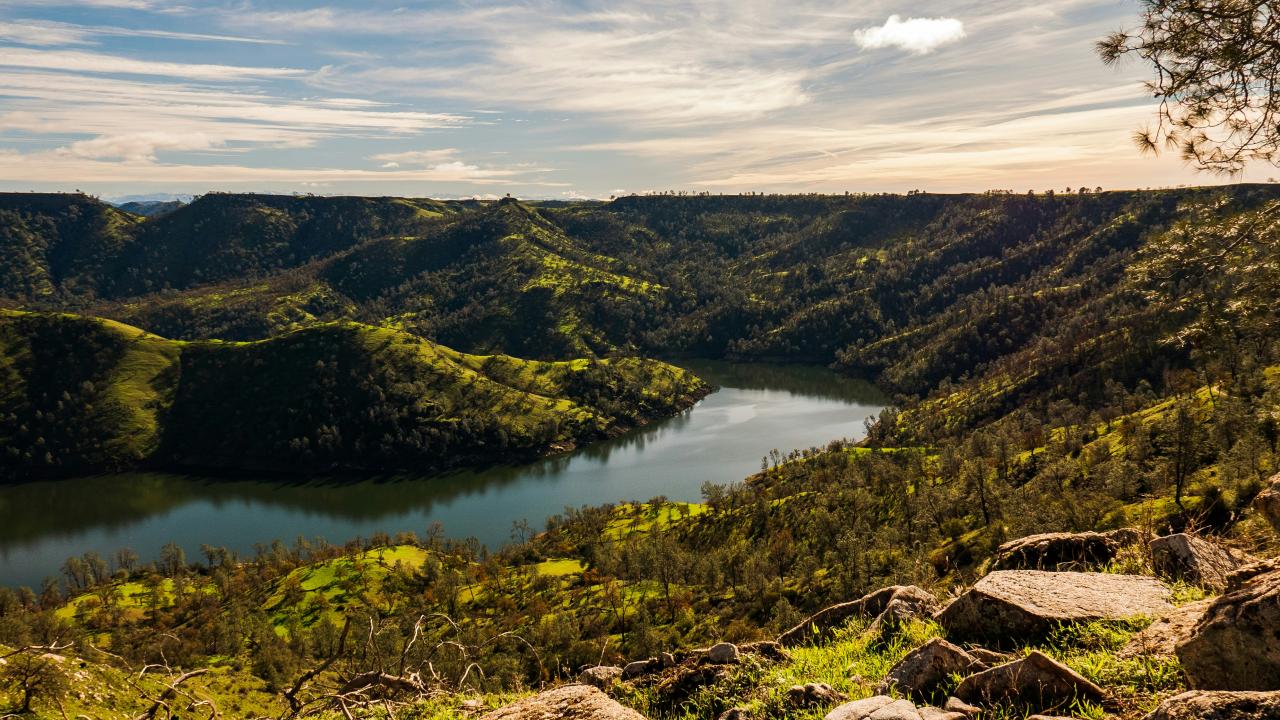
Missing Salmon in the San Joaquin River Prompts Student Research
Quick Summary
- For the Policy Clinic, our team worked alongside NOAA Fisheries to analyze the impacts of salmon extirpation on communities in the San Joaquin River Basin.
This article is the second in a series of six that highlight the Policy Clinic projects completed by EPM masters students in collaboration with our partners. We'd like to give a special thanks to Meiling Colombano and Jonathan Ambrose from NOAA Fisheries for collaborating with us on this project.
For four decades, over 60 miles of the San Joaquin River ran dry. What does this mean for the salmon of the San Joaquin River Basin, local ecosystems, and impacted communities?
Prior to the construction of Friant Dam, up to a million salmon were swimming up the San Joaquin River to spawn. Today there are only a few left. Salmon have been an important ecological component to the San Joaquin River Basin for hundreds of years. Their population decline - the result of over a century of extensive human modifications to their environment - has been well studied. The salmon culture - not so much. Based on the prominence of salmon in the San Joaquin River Basin in decades past, one might assume that local communities, especially tribes, had close cultural ties to salmon. In practice, however, there is minimal documentation examining how the declining salmon populations have impacted local culture and practices.
In coordination with NOAA Fisheries, we were tasked with gathering information on the current and historical relationship between local communities and salmon populations in the San Joaquin River Basin. To investigate this matter, our team consulted a diverse breadth of contacts, including tribal members, museums, libraries, professors, health professionals - and many more. This research provides context for the region and ensures diverse insights on the topic, with the potential to establish lasting tribal relationships for future collaboration. We also compiled a list of salmon restoration projects and conducted interviews in order to develop an overview of the history of funding for salmon restoration projects in the region, thereby developing insights into how salmon restoration funding is allocated in the area. Finally, using maps developed in Arc-GIS, we were able to visualize current threats to salmon, green space accessibility, and the ongoing restoration projects as well as identifying the various communities potentially impacted by threats to salmon.

Some of our findings include:
- Distrust from tribal communities, stemming from a history of colonization, has led to limited published literature on salmon culture and practices.
- Tribes were heavily dependent on the salmon for sustenance and cultural practices in the San Joaquin River until dams were put in place.
- Our maps indicate an overall lack of access to green space for communities of color, communities with low English proficiency and those with disability status. See an example map below.
- Agriculture has historically been prioritized for water use, leading to a lack of recreational green space and loss of salmon as a food source in communities already facing socio-economic hardships.
- Mapping efforts and funding research highlight that even though the San Joaquin River Basin is an essential habitat for Chinook salmon, restoration projects are typically funded via legal mechanisms intended to hold agencies accountable for historic water management practices, with general restoration funds playing a relatively small role in the area.
To overcome the centuries of environmental and cultural degradation in the basin, future work needs to be intentional, inclusive to all local communities and holistic in nature. We are hopeful that our report will be informative for future projects that our clients conduct in the San Joaquin River Basin. We thank our interviewees for their time and contributions on this project.
*This report was completed as an independent research project by graduate students at the University of California, Davis, in coordination with NOAA Fisheries.
